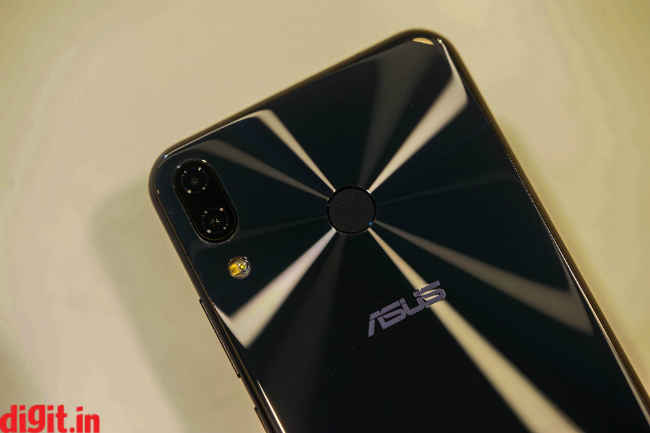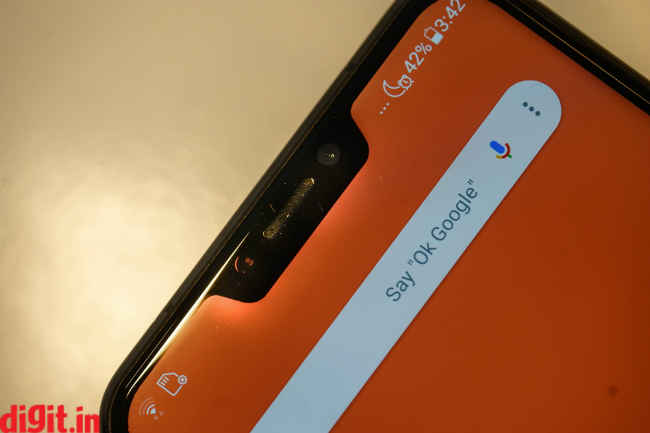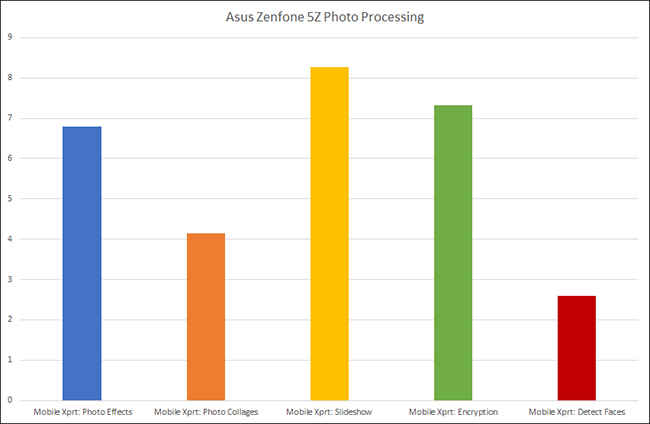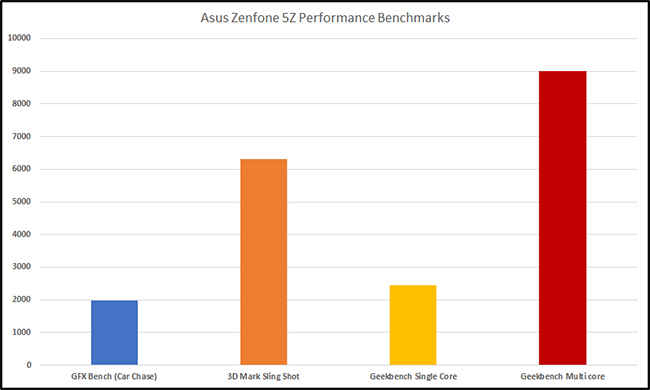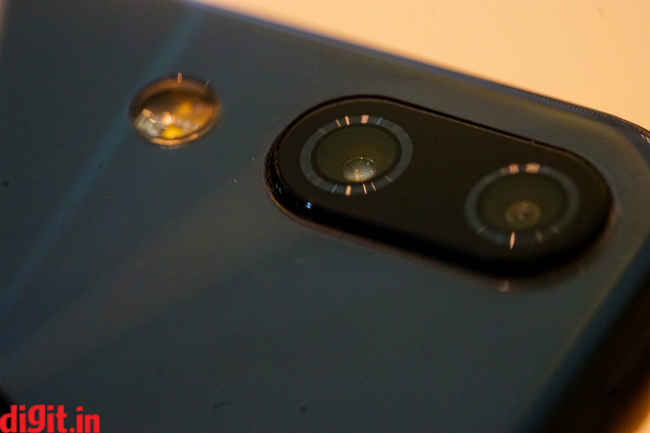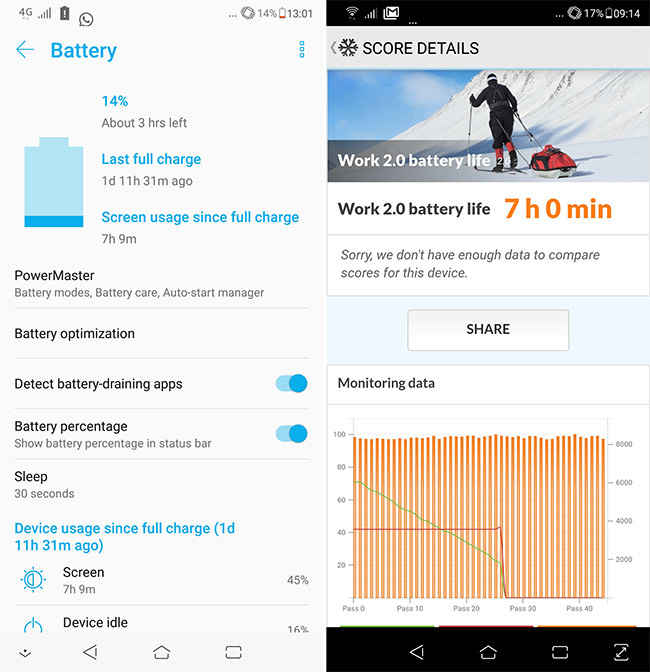Asus Zenfone 5z Review : All-rounder in a budget
The Asus Zenfone 5Z checks almost every box when it comes to our expectations at a price point that makes the value for money proposition of this smartphone almost impossible to ignore.
Design and build
Asus continues to use their signature Concentric Design language for the Asus Zenfone 5Z. They take their own design and blend it with the current trend of using glass. The front and back are both glass panels held together by an aluminium frame. The glass on the back just barely sticks out of the metal frame, giving the edge a not-so-seamless feel. The first time I held the Asus Zenfone 5Z in my hands, I knew I was holding a premium device. The phone doesn’t feel like its made of cheap materials. The glass feels like glass and the metal frame has just enough heft to register as metal. It is lighter than the Samsung Galaxy S9+ I usually use, so its lightness also stood out. While the build feels premium, the glass back makes the phone very slippery. I’ve had the phone slip off various “barely curved “surfaces like a couch, the top of a book and on one occasion, even the desk because there was a small coin elevating the phone from one edge. I’ve had the phone slip out of my hands as well, but that was because I wasn’t supporting the phone from its bottom. Asus bundles a TPU case in the box which would make the phone less slippery, but in its natural form, the phone is slippery.
The front is encased in 6.2 inches of Gorilla Glass which feels slightly less slippery than the back, but this could very easily just be conjecture. On the front, the only place where the glass is interrupted is the thin earpiece grill. The right side of the phone has the volume rocker and the power button while the hybrid SIM card tray resides on the left side of the phone. The 3.5mm headphone jack and the USB Type-C charging port are at the bottom, right beside the loud speaker.
The Asus Zenfone 5Z follows a very minimalist design philosophy. It uses simple materials to put together an elegant looking device. It lacks any kind of IP rating and Asus refrains from making any claims of water resistance. The phone may look good, but it does let down in terms of its durability, which is called into question due to its incredibly slippery surface. This phone does not belong outside a case which is unfortunate because it is a very good-looking phone. I just don’t understand why manufacturers insist on using glass as the primary construction material when they don’t even offer wireless charging.
Display
The Asus Zenfone 5Z comes with a 6.2-inch display with an unorthodox 18.7:9 aspect ratio. This makes the display slightly wider than what you’d expect from a regular 18:9 display. It has a 1080×2246 resolution, pegging the display’s pixel density at roughly 402ppi. Asus has opted to use an IPS-LCD panel instead of an AMOLED screen. The screen has 95% DCI-P3 (wide colour gamut) coverage but does offer 100% sRGB colour reproduction. This you can achieve by using one of the three provided colour settings. The first allows you to set the screen in wide colour gamut, the second in sRGB and the third allows you full control over the amount of saturation and warmth you would like the display to have. Frankly, this kind of customization is rare to see in a smartphone, so its great to find it here.
The gorgeous display also comes with a notch. The trend doesn’t seem to be slowing down and while many seem to be against it, the best manufacturers can do is provide us with a “hide notch” setting, which the Asus Zenfone 5Z comes with. Enabling this setting created a black band at the top of the display, however, at certain angles, you can distinguish the notch and the display because of the IPS LCD panel, which cannot turn to true black. What was nice, however, is that the panel uniformity is very consistent and there are no light leaks anywhere on the panel. The brightest the panel goes is 770 lumens (224 nits), and when set to minimum brightness, our lux meter measured 7 lumens (2 nits). The Asus Zenfone 5Z does have one of the brighter displays in the price bracket and also one that is capable of going dim enough to be comfortably usable in pitch dark.
The bezels themselves aren’t all that significant. The 18.7:9 aspect ratio makes the phone look and feel a little wider than you’d expect. The phone is not easy to use with a single hand because of its width and the slippery back. However, the exceptional brightness and minimal reflectance result in a very pleasant viewing experience both indoors and outdoors. This is a display that won’t disappoint.
Performance
Powered by a Qualcomm Snapdragon 845 Chipset and 6GB RAM, the Asus Zenfone 5Z offers pretty much top of the line when it comes to hardware. The onboard 64GB UFS2.1 storage offers plenty of room for apps, music and photos, but if it doesn’t suffice, there’s also a microSD card slot that you can use to add up to 2TB of additional storage.
For testing the performance of the phone under “normal conditions” I loaded up about 10GB of photos and roughly 20GB of music into the phone. There was also about 10GB of videos and of course, plenty of apps that took up an additional 2GB. The idea was to see if the phone would slow down when it starts to reach its storage limits because there’s been concern about phones slowing down when this happens. The usual suite of benchmarks was run and the results were surprising, to say the least. The Asus Zenfone 5Z scored 6317 in 3D Mark Slingshot while the OnePlus 6 had scored 5702. Similarly, Geekbench Single and multicore scores for the 5Z were 2439 and 9002 respectively, higher than the OnePlus 6’s 2372 and 8502. The OnePlus 6 we reviewed had the Snapdragon 845 as well, but a higher 8GB of RAM.
In terms of real-world usage, I used the phone as my daily driver for over 10 days and a few things stood out. For starters, despite nearly having the storage maxed out, there was no noticeable slowdown in performance. Whether it was playing Asphalt 8, Asphalt Extreme, Modern Combat 5 or Injustice, the phone kept up with all the touching and swiping without breaking a sweat. Editing photos was also a breeze using Adobe Lightroom Mobile and Snapseed. The combination of the Snapdragon 845 with 6GB of RAM has allowed hardware performance to exceed the demands of the most “demanding apps”. I also noticed towards the end of my review that I actually had over 45 tabs in Chrome open and switching in between them to decide which ones to close. There was no stutter while switching between those tabs or even the apps being held in the background. Never a single instance of feeling like the Zenfone 5Z wasn’t able to keep up with the unrealistic demands of a tech journalist.
The Asus Zenfone 5Z may have just set a new record, but what it definitely did was change our perception about Asus’s capabilities of making a beast of a smartphone. Now, all we have to check for is whether the phone can keep up the performance consistently over a course of time. We will follow up with a 6 month usage report for this phone for sure.
Software & UI
The Asus Zenfone 5Z runs the company’s own ZenUI based on Android 8.0. In the past, Asus has been faulted for having clunky UI, with tacky icons. The new avatar of ZenUI is much cleaner and leaner. The company has really trimmed the fat on this one, probably why the phone’s performance has been so good. If you’re not liking the icons, of the stock UI, you can just download a new icon pack from Play Store and apply them using the built-in theme engine. No more need for custom launchers. You also get to decide the number of icons you can fit in a row and column for the home screen, so that’s helpful. The Quick Settings bar follows the same design principle as other Android phones, that is, pull down from the top. The menu follows a white and blue theme, consistent across the entire Android UI, but you can change this using an internal theming engine. There’s a number of themes available on Asus’s internal store, so you can pick and choose what you like. Again, no need to resort to third-party launchers.
The user interface of the Asus Zenfone 5Z is simple and easy to get used to. If you’re a first time Android user or coming from a phone that too has a heavily customised interface, you may need to spend some time familiarizing yourself with where all the options are. The settings menu has a search bar that can pull up the setting you want, but I would still recommend just poking around to see what options are housed under what setting.
One last critical feature about the phone’s software is the number of AI features bundled here. While we were not able to tell for certain whether all these features worked or not (as advertised) what we do know is that Asus allows you to turn the features on and off. AI Ringtone, for example, worked well for me. What this feature does is use the microphones on the phone to ascertain the amount of noise there is in the environment. If it is too loud, then it turns the ringer to full and if you’re in a quiet room, it lowers the volume on its own. The only problem with this was my phone going off while watching a movie in a theatre, leading to much embarrassment. Thankfully, AI algorithms can always be tweaked and even better is being able to turn this feature off completely. Other smartphone companies don’t offer the ability to turn on and off the AI features, but Asus did, which is great
Camera
The Asus Zenfone 5Z houses a 12 Megapixel primary camera with a 24mm lens and an f/1.8 aperture. The secondary camera is an ultra-wide camera (12mm) with an 8-megapixel resolution and f/2.0 aperture. Here, only the primary lens has OIS while the secondary lens utilizes EIS, which is alright as the wider the field of view of a lens, the more tolerance it has to camera shake. From personal experience, I was not expecting anything great from the Asus Zenfone 5Z camera, but I was left rather surprised by the end of our testing process.
The Zenfone 5z has a standard 24mm 12-megapixel primary Sony IMX 363 sensor measuring 1/2.5” with a rather large 1.4um pixel pitch. The lens has a f/1.8 aperture. It’s the same sensor used on the Mi Mix 2S that received a record score from DxOmark. The secondary sensor is an 8-megapixel ultra-wide-angle lens with f/2.0 aperture, a large 1/4” sensor and 1.12um pixel size. Finally, there’s a colour correction sensor placed inside the flash unit and 4-stop OIS (on both lenses) and gyroscope-based EIS.
While taking photos outdoors, the AF is quick, and the photos look vibrant. The amount of contrast in photos tends to vary, but it's not something that can’t be quickly fixed using the built-in gallery’s editing tools or through one of the more popular editing apps like Snapseed or Lightroom. With HDR enabled, the dynamic range on the photos increases noticeably. The camera is also not applying a whole lot of compression as the detail in my favourite test subject (my puppy) remains intact for the most part. The camera shutter is quick to respond and there is little lag while taking a photo or in between shots. That new ISP Qualcomm baked into the Snapdragon 845 is really working some serious magic.
When considering low light photography, the AF works decently, although if you’re into going to pubs or similarly dim-lit environments, then expect the AF to struggle a little. The images coming out of the camera from night time are decent at best. They don’t have noise, but that’s because of the aggressive noise reduction. As you can see in the photo below (this is a standard test for measuring ISO performance), books which have black covers show significant smoothening of detail due to strong noise reduction, but the text is still mostly legible. Taking a photo outdoors during dusk revealed similar behavior, with aggressive noise reduction leading to excessive smoothening and hence loss of detail. This could be avoided if one was shooting in RAW mode, but for now, that option is missing from the Pro mode. Asus tells me that the option will be coming to the smartphone in a few weeks through an OTA update, so for now, I’m going to leave that out.
The Zenfone 5Z also offers a portrait mode, which I found to be surprisingly good. It was able to capture a perfect portrait of my dog, who is generally impossible to photograph even using a DSLR (unless he is sleeping or is being lazy). The Zenfone 5Z managed to lock focus and take a shot all well before he could move his head, giving me a crisp, clean photo with excellent background separation.
The secondary lens with its ultra-wide perspective gives you a field of view that is equivalent to having a 12mm lens mounted on a full frame camera. Interestingly, the ultra-wide camera has noticeably more JPG compression being applied to it than the regular camera, which results in noticeably different image quality. It's nice to have a dual camera setup which offers a different perspective on the world, but what would be better if Asus equalized the performance coming out of the two sensors or allowed RAW capture from the secondary camera so that users can have control over the final quality of the image.
Selfies are fast becoming as important as the photos from the rear camera, so keeping that in mind, Asus has a separate app called Selfie Master which is designed to give you the best possible output when using the front-facing camera. This app will allow you to “beautify” your selfies, video selfies or even Facebook lives in real-time. Selfies, though vibrant, lack much detail, but that is, unfortunately, the case with almost every smartphone’s front-facing camera so you’re not really losing anything here. Just to clarify, the front-facing camera does not have any autofocus capabilities.
The Asus Zenfone 5Z also offers impressive video performance, offering 4K video recording resolution at 60fps. There is also slow-motion recording offering 240fps at 1080p. The focusing hiccups a little while recording video, but its not that bad. The FOTA update that Asus has just rolled out is supposed to fix the problem.
The last thing to note about the Asus Zenfone 5Z’s camera is that while taking photos, the preview that is generated is vastly different from the photo you will actually get. In my time using the phone, the preview I was seeing often contained blown out highlights or grossly underexposed shadows, often discouraging me from taking the photo. However, once the photo was taken, the result was completely different. The exposure was beautifully balanced, with enough detail in both highlights and shadows. This is a major issue Asus needs to absolutely fix. Aside from this, the camera was actually rather pleasant to use, with good images and video coming out of the phone. There is of course, enough room for improvement on the wide angle lens though.
While you ou can see more samples in full resolution in our Flickr Gallery here, more low resolution samples can be seen at the bottom of this review.
Battery
The Asus Zenfone 5Z packs a 3300mAh battery which supports fast charging. In our PCMark battery test, the phone lasted over 7 hours, while in real-world usage, the phone was giving an average of 7 hours worth of Screen on Time. Usually, the phone was unplugged from charging at 7 in the morning and easily made it till the night (roughly 2 am) without breaking a sweat. This behaviour was consistent throughout the review period, during which the Asus Zenfone 5Z was my daily driver. The fast charging was on one occasion able to take the battery from 9 percent to 64 percent in under 30 minutes, which is very impressive. In this department, the Zenfone 5Z does not disappoint even a single bit.
Bottomline
The Asus Zenfone 5Z is the underdog no one expected. When it was announced at MWC 2018, many of us assumed that since this was a flagship device, Asus was going to put a ridiculous price tag on it, since that’s what they have done in the past. However, with a starting price of Rs 29,990, it is nearly impossible to ignore the immense value for money this phone has to offer. It does leave out some important features like water or dust resistance but does come with a microSD card slot which neither the OnePlus 6 nor the Honor 10 offer, even though priced much higher. The benchmarks peg the Asus Zenfone 5Z at par, if not ahead of the OnePlus 6’s 8GB RAM variant we reviewed. There is frankly little reason to not consider the Asus Zenfone 5Z as a viable alternative to the Honor and OnePlus offerings, but more importantly, you, the buyer, now has more choice in the sub-40K segment of phones offering flagship specs. Asus even bundle a pair of earphones and a case in the box, only adding more value to the overall package.
More Camera Samples
Swapnil Mathur
Swapnil was Digit's resident camera nerd, (un)official product photographer and the Reviews Editor. Swapnil has moved-on to newer challenges. For any communication related to his stories, please mail us using the email id given here. View Full Profile

